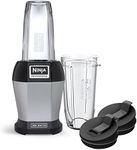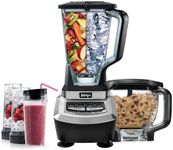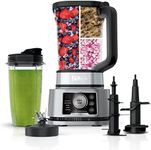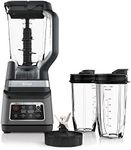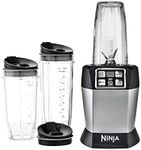Buying Guide for the Best Ice Crush Blender
Choosing the right blender for crushing ice is all about understanding your needs and matching them to the features that matter most. Not all blenders are created equal—some are better suited for smoothies and soft foods, while others are built to handle tough tasks like crushing ice. To make the best choice, think about how often you'll be using the blender for ice, what other tasks you want it to perform, and how much capacity you need. By focusing on a few key specifications, you can find a blender that will deliver the performance and durability you expect.Motor Power (Wattage)Motor power, measured in watts, tells you how strong the blender's engine is. This is especially important for crushing ice, as a weak motor may struggle or even burn out. Blenders typically range from around 300 watts to over 1500 watts. For light tasks like blending soft fruits, lower wattage is fine, but for crushing ice, look for a blender with at least 600-1000 watts. If you plan to crush ice frequently or in large quantities, a higher wattage will ensure smoother results and longer-lasting performance.
Blade Design and MaterialThe blades are what actually do the work of crushing ice, so their design and material matter a lot. Strong, sharp, and durable blades made from stainless steel are best for handling hard ingredients like ice. Some blenders have specially designed blades that create a vortex to pull ice down for more efficient crushing. If you want to crush ice regularly, look for blenders that highlight their ice-crushing capabilities and have robust, multi-level blades.
Jar Material and CapacityThe jar, or pitcher, holds the ingredients while blending. For ice crushing, a sturdy jar is important because ice can be tough on plastic. Glass jars are durable and resist scratching, but they can be heavy and breakable. High-quality, BPA-free plastic jars are lighter and less likely to shatter, but may scratch over time. Capacity ranges from single-serve (about 16 ounces) to large family-size (over 64 ounces). Choose a size that matches your typical batch size—smaller for personal use, larger for families or parties.
Speed Settings and Pulse FunctionSpeed settings let you control how fast the blades spin, which is useful for different tasks. For ice crushing, having multiple speeds and a pulse function is helpful. The pulse function gives short bursts of power, which helps break up ice without overworking the motor. If you want more control over texture, look for blenders with several speed options and a dedicated ice-crush or pulse button.
Build Quality and StabilityA blender that feels solid and stable is less likely to move around or tip over when crushing ice. Look for a base that is heavy enough to stay put during use, and check for non-slip feet. Good build quality also means the blender will last longer, especially when handling tough jobs like ice. If you plan to use your blender often for ice, prioritize models that feel sturdy and well-made.
Ease of CleaningCrushing ice can leave behind small shards and residue, so easy cleaning is important. Some blenders have dishwasher-safe parts, while others require hand washing. Removable blades make cleaning easier, but check that they are easy to take out and put back. If you want to save time and effort, look for blenders with simple designs and dishwasher-safe jars and lids.
